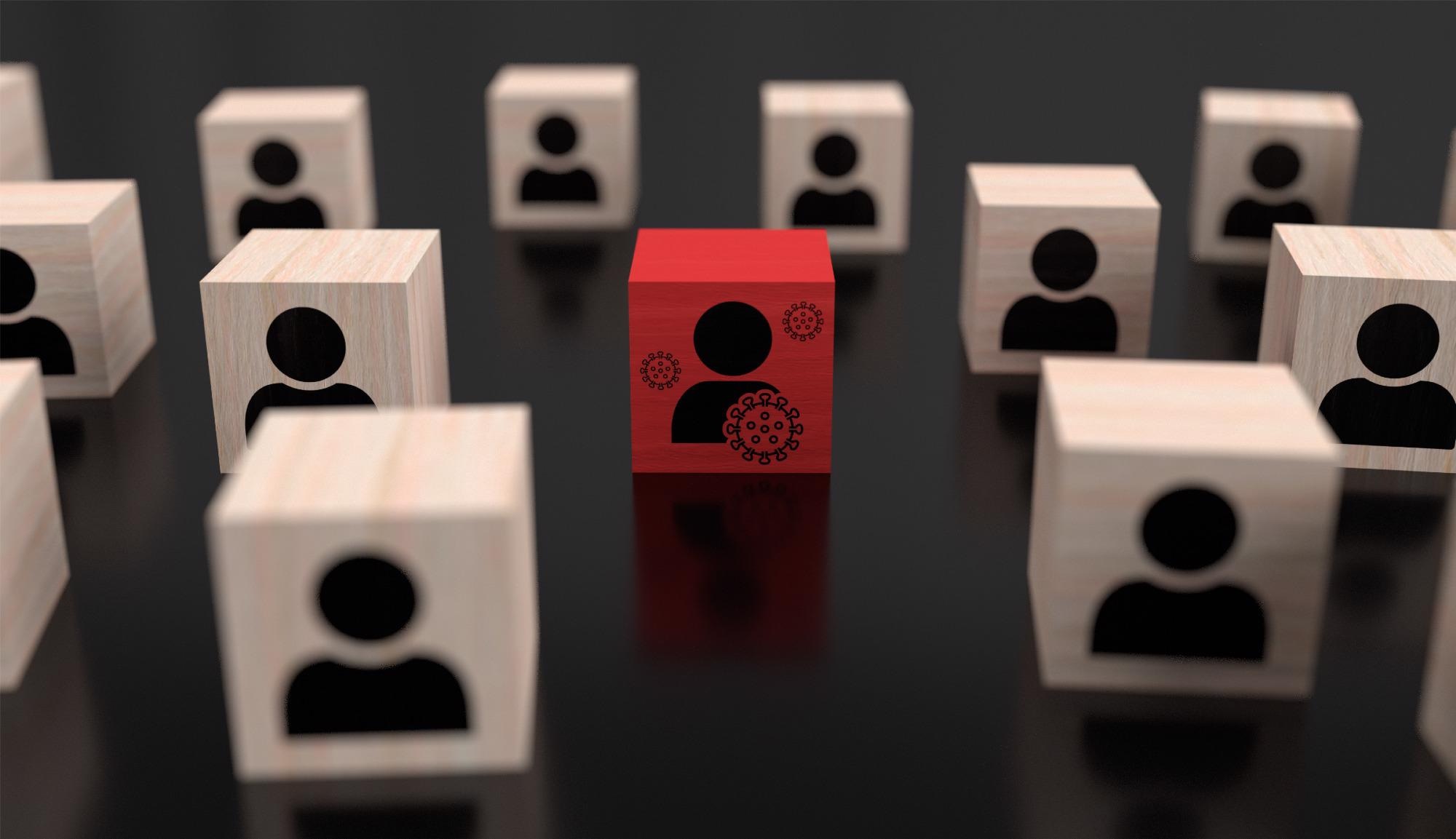A recent research paper published in the journal Physics of Fluids analyzed the overdispersion in the coronavirus disease 2019 (COVID-19) airborne transmission.
 Study: Analysis of overdispersion in airborne transmission of COVID-19. Image Credit: oxinoxi / Shutterstock
Study: Analysis of overdispersion in airborne transmission of COVID-19. Image Credit: oxinoxi / Shutterstock
Background
The severe acute respiratory syndrome coronavirus 2 (SARS-CoV-2) pandemic has been characterized by overdispersion and superspreading events comparable to SARS and other respiratory virus outbreaks. Any incident that results in more than the typical number of secondary transmissions is referred to as superspreading.
Overdispersion is a non-random trend of grouping in the context of contagious diseases, which frequently involves a large proportion of zero cases and a limited percentage of large outbreaks.
Nevertheless, the specific functions and influences of established physical and viral factors correlated to transmission processes on overdispersion are still unknown. Moreover, the characteristics and nature of superspreading episodes are instrumental in explaining the spread of SARS-CoV-2. To date, mechanistic simulations depicting airborne transmission have not been combined with real-world occupancy and distribution data to better explain large-scale characteristics of disease dynamics, such as transmissibility overdispersion.
About the study
In the present study, the authors used real-world occupancy information from over 100,000 social contact contexts in 10 United States (US) metropolises to undertake mechanistic modeling of COVID-19 point-source transmission via infectious aerosols. The primary purpose of this study was to use the molecular basis of airborne disease transmission to investigate event-level SARS-CoV-2 spread overdispersion utilizing real-world data from a significant number of social engagements.
The team tried to establish an algorithm centered on aerosol dispersion with randomized data and obtainable occupancy information to derive the distribution of the number of secondary infections for every infectious case. They investigated whether observed trends of overdispersion in secondary transmissions could be replicated through simulations utilizing the above algorithm.
Further, the scientists aimed to develop an analytical function (rather than a fit) that may explain the probability density function of the number of secondary infections arising from the dynamics of the problem. Furthermore, they attempted to determine the dominant factors that cause overdispersion and the consequences for mitigation strategies.
To achieve this, the scientists used 100,000 random social-contact conditions to solve an aerosol dispersal model by combining real-world area and occupancy data with practical ventilation and viral load rate to attain the probability distributions for the number of secondary infections for each infectious case in those situations.
Results and discussions
According to the simulated results, the aerosol transmission pathway was compatible with overdispersed individual COVID-19 infectivity. In addition, with exposure time, ventilation rate, and speaking time, SARS-CoV-2 load fluctuation was the most substantial factor controlling secondary attack rates. According to the authors, they, for the first time, generated analytical equations that precisely characterized the modeled probability density functions of secondary attack and infection rates. Besides, the generated analytical expressions revealed how the quantitative link among personal-level viral load variance and event-level occupancy governs overdispersion simultaneously.
These findings reveal that even in the case of airborne transmission, about 4% of index cases in indoor contexts were responsible for 80% of secondary cases, underlining the need for identifying and concentrating mitigation efforts on superspreading event causes. The results emphasize the significance of interventions, including isolation through rapid testing to identify intense viral shedding periods, for reducing exposures during stages of heightened viral shedding, improved ventilation, and the higher likelihood of outbreaks with SARS-CoV-2 variants of concern (VOCs) correlated with superior viral loads. Ultimately, considering viral burden and occupancy over indoor environments, the present analytical function may predict the spatially specified likelihood of outbreaks and outbreak magnitude via point-source transmission events.
Conclusions
Overall, the study findings demonstrated that around 4% of COVID-19 index cases possibly caused 80% of secondary SARS-CoV-2 infections, resulting in an extended tail probability distribution function of secondary infections per infectious event. Overdispersion appears to be notably driven by personal-level heterogeneity in SARS-CoV-2 load, with occupancy coming in second. The team then developed an analytical function that mimics the modeled SARS-CoV-2 overdispersion. Further, they illustrated the efficacy of potential COVID-19 mitigation techniques using this analytical function.
The present analysis adds a relevant dimension to the growing body of proof regarding SARS-CoV-2 airborne transmission by linking the mechanistic insights of COVID-19 aerosol spread with reported large-scale epidemiological features of outbreaks and thus unfolds as a potent tool for evaluating the likelihood of epidemics and the possible effects of mitigation actions on extensive disease dynamics. The simulation in this article covers overdispersion in the number of secondary cases rendered by each infectious case over an hour in such 100000 instances, assuming one index case at each site. The team mentioned that when combined with appropriate data, the current analytical expressions created and confirmed using simulations could explain overdispersion through drastically broader timeframes and contact vicinities.
Journal reference:
- Swetaprovo Chaudhuri, Prasad Kasibhatla, Arnab Mukherjee, William Pan, Glenn Morrison, Sharmistha Mishra, and Vijaya Kumar Murty , "Analysis of overdispersion in airborne transmission of COVID-19", Physics of Fluids 34, 051914 (2022), DOI: https://doi.org/10.1063/5.0089347, https://aip.scitation.org/doi/10.1063/5.0089347